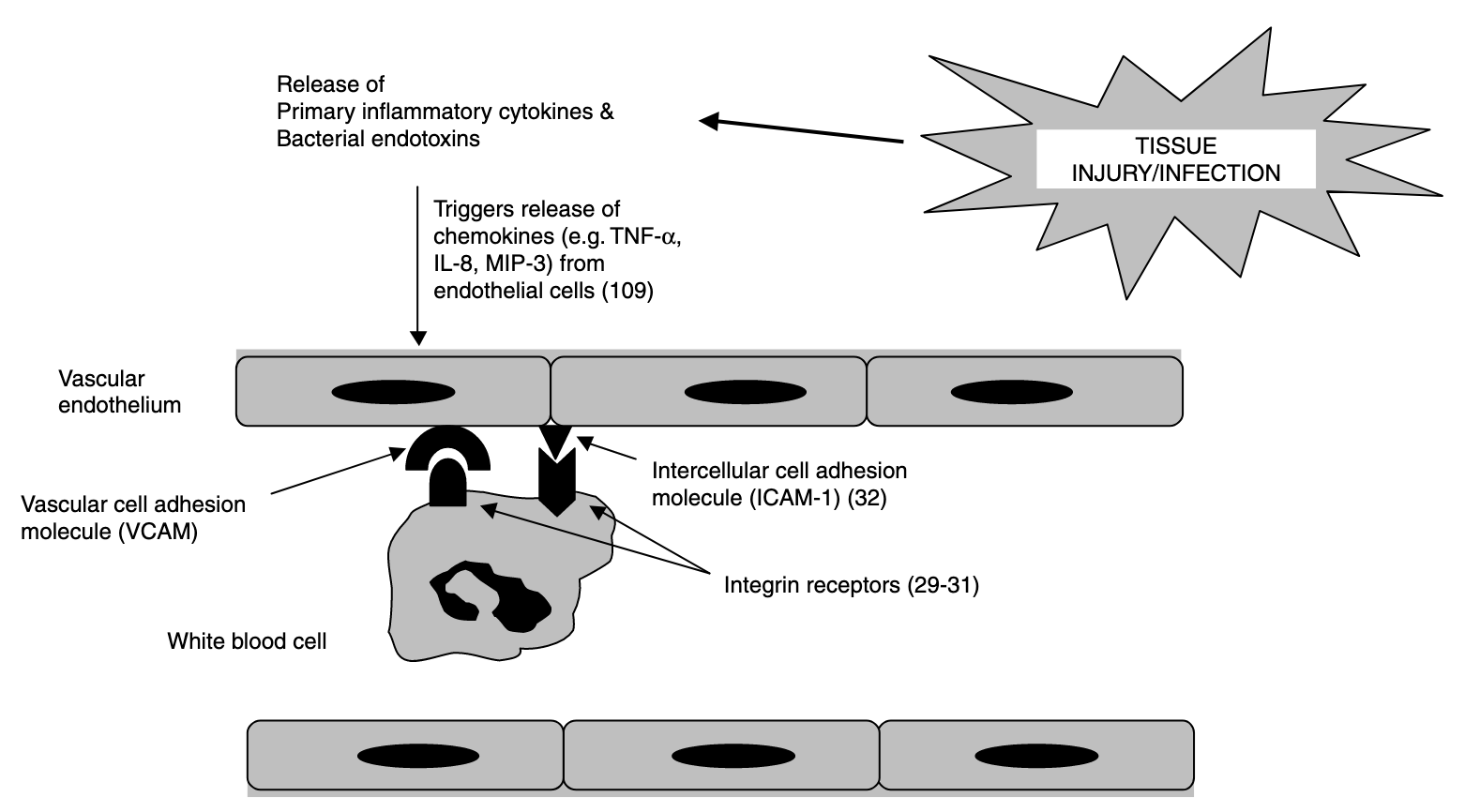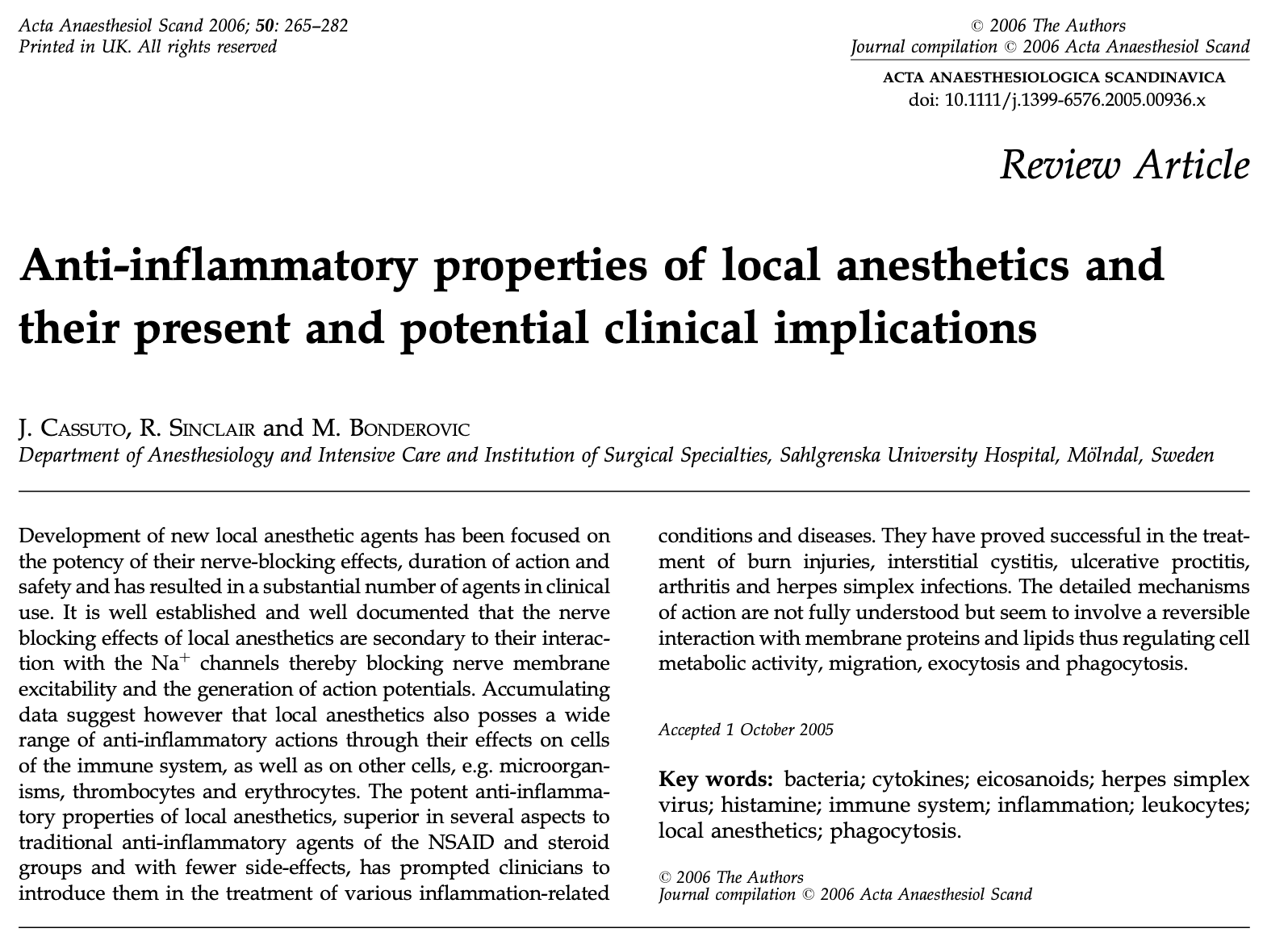

See full FREE text (PDF)
Abstract
Development of new local anesthetic agents has been focused on the potency of their nerve-blocking effects, duration of action and safety and has resulted in a substantial number of agents in clinical use. It is well established and well documented that the nerve-blocking effects of local anesthetics are secondary to their interaction with the Naþchannels thereby blocking nerve membrane excitability and the generation of action potentials. Accumulating data suggest however that local anesthetics also possess a wide range of anti-inflammatory actions through their effects on cells of the immune system, as well as on other cells, e.g. microorganisms, thrombocytes, and erythrocytes. The potent anti-inflammatory properties of local anesthetics, superior in several aspects to traditional anti-inflammatory agents of the NSAID and steroid groups and with fewer side-effects, has prompted clinicians to introduce them in the treatment of various inflammation-related conditions and diseases. They have proved successful in the treatment of burn injuries, interstitial cystitis, ulcerative proctitis, arthritis, and herpes simplex infections. The detailed mechanisms of action are not fully understood but seem to involve a reversible interaction with membrane proteins and lipids thus regulating cell metabolic activity, migration, exocytosis and phagocytosis.
Keywords: bacteria; cytokines; eicosanoids; herpes simplex virus; histamine; immune system; inflammation; leukocytes; local anesthetics; phagocytosis.
See full FREE text (PDF)
